Idea by
Lucia Fiorani
https://www.instagram.com/wild.wild.flower/
Call for ideas 2020
Dear End
Dear End
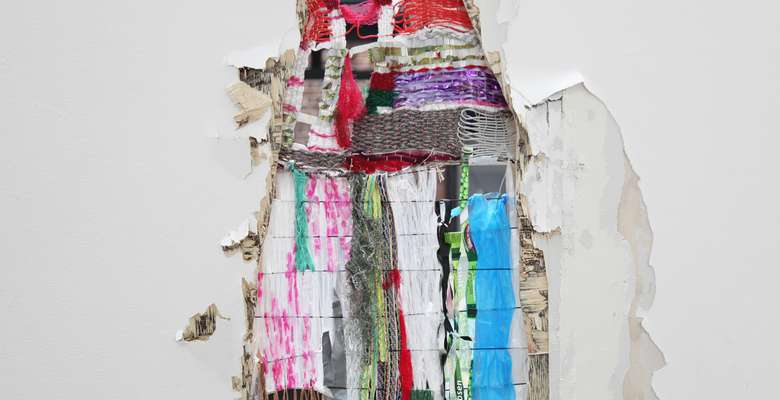
- New alliances
Produce, consume, discard. The contemporary artefacts are born embedded with the perspective of becoming waste in the short-term. In architecture, unfinished and abandoned buildings quickly become contemporary ruins. Our leftovers are a document about the present, and we are surrounded by them. What will be of them after our human passage? Whom will they speak to? Each other? Other life forms? Can they build a narrative for themselves, if only we let them speak? Dear End is about the wounded, fragile and ruthless language of contemporary ruins, in the various forms they take: waste, leftovers, abandoned or incomplete architecture pieces. The project is a research on how to speak the language of the fragile, and how to read between the lines of our built environment. Architecture is here seen in all its vulnerability. Dear End is a suggestion on how to study wasteland, ruins, detritus as the language that will transmit our values to the future life forms inhabiting the planet.
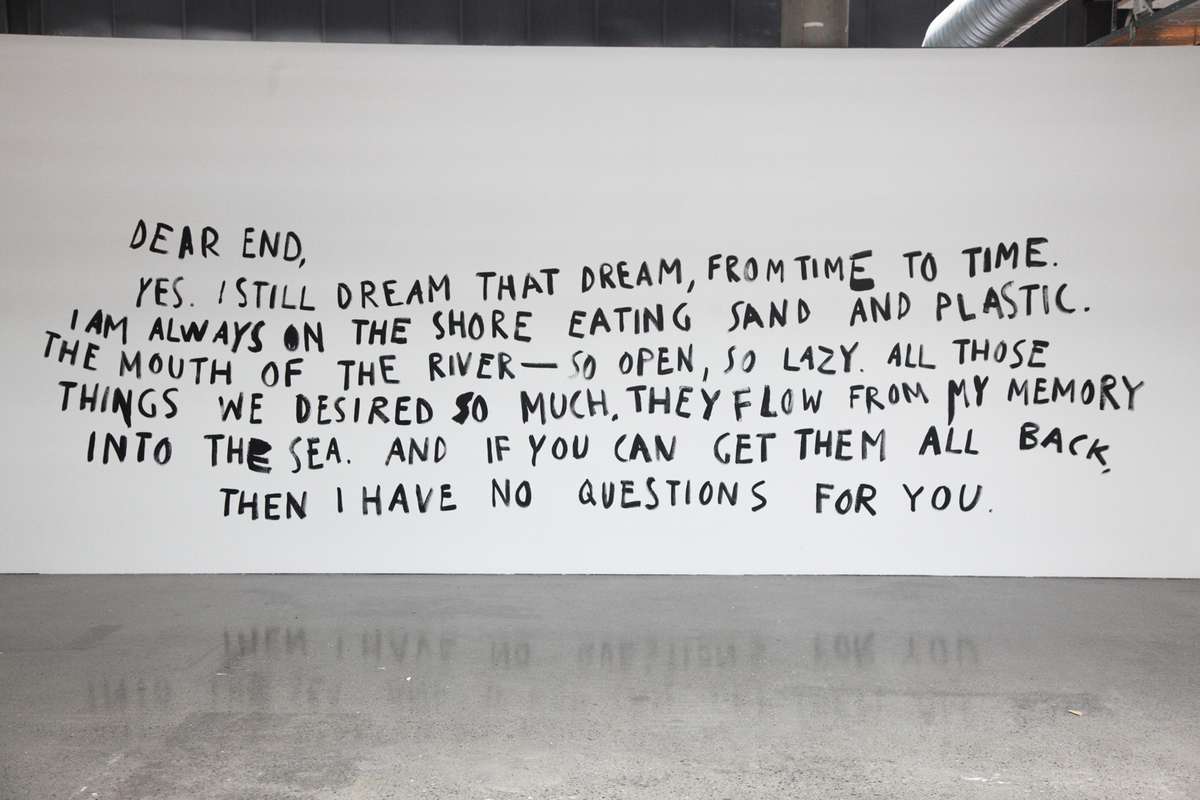
Letter to the End, 2019, murales.
From a note written on Langøyene island, Oslo. The island originally consisted of two separate pieces of land. Across the 20th century, the strait between the two islands has been filled with garbage deposits and then covered with soil, until becoming one island.
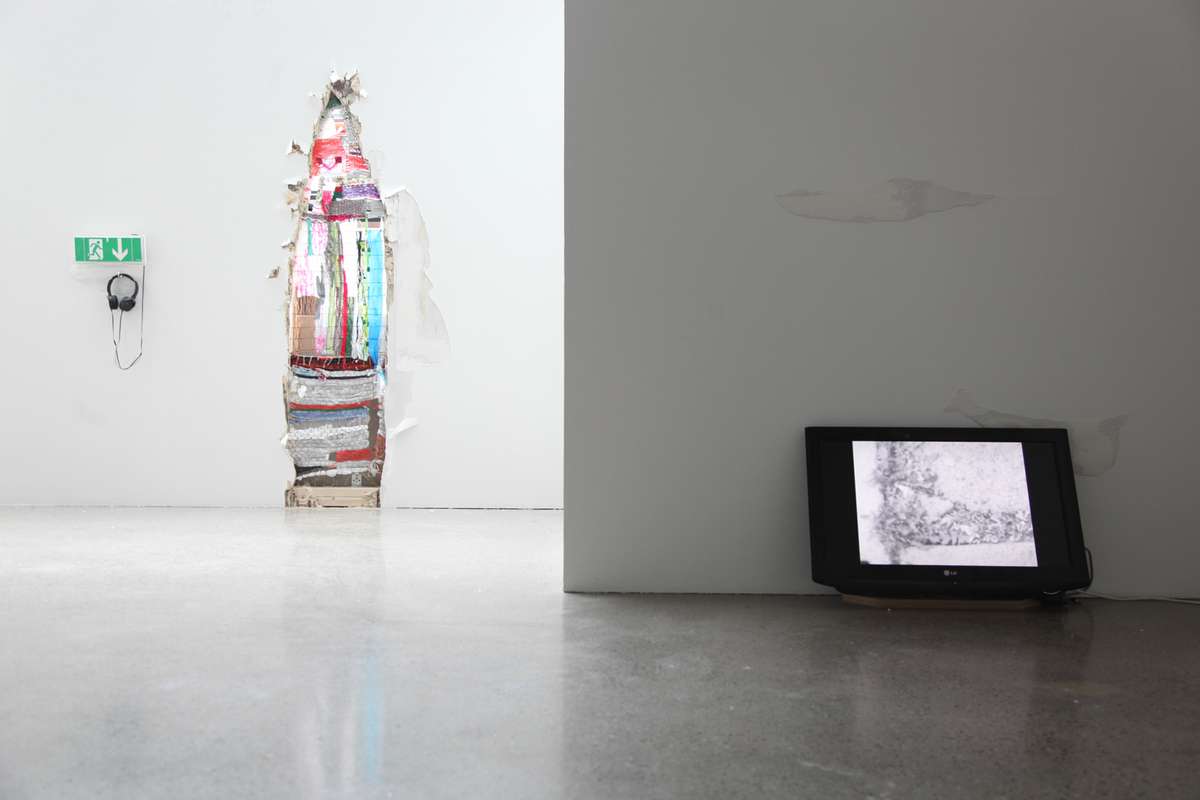
Dear End, 2019, mixed-media installation consisting of: found emergency exit sign, audio piece, broken wall, plastic waste textile, digitalised 8mm film on tv screen.
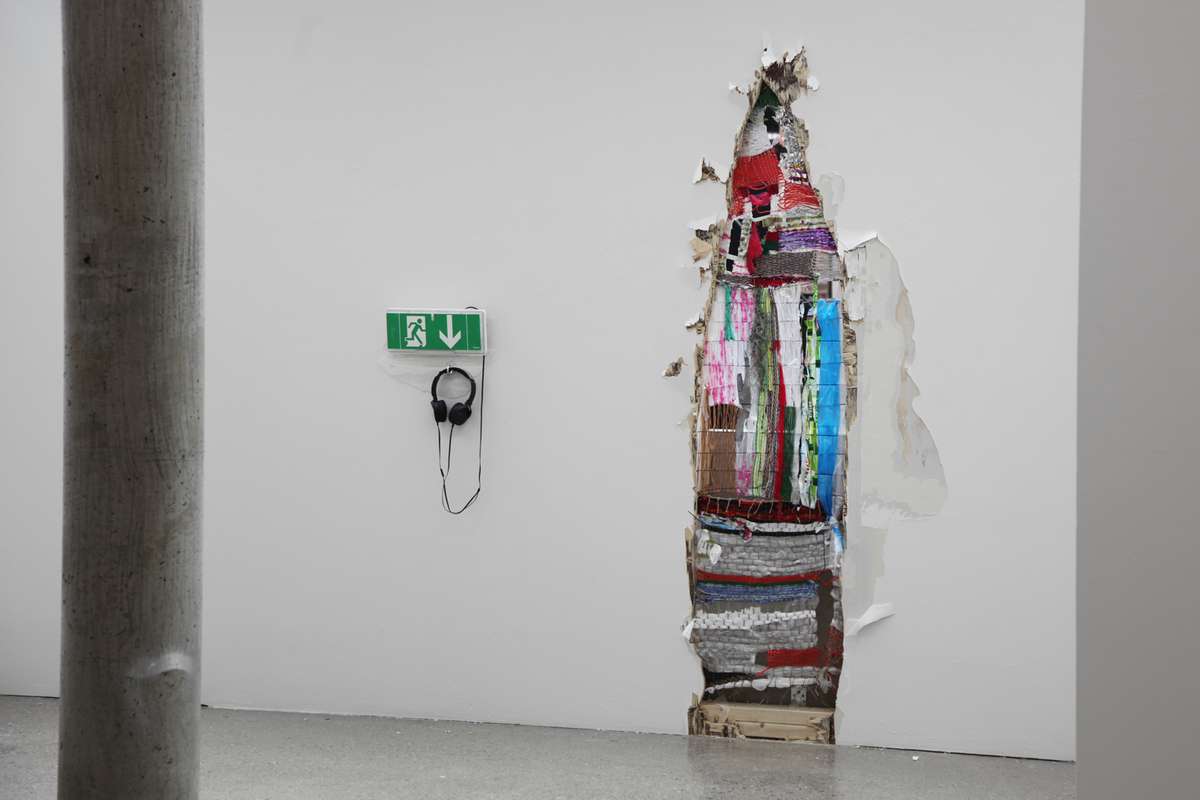
Dear End, 2019, mixed-media installation.
The wall was broken and repaired with a fabric, woven out of collected plastic waste material. Plastic was collected in ditches and farming land. The audio piece was a sound recording of my breath: I was wearing the woven plastic fabric, and the crackling sound of plastic accompanies my breathing.
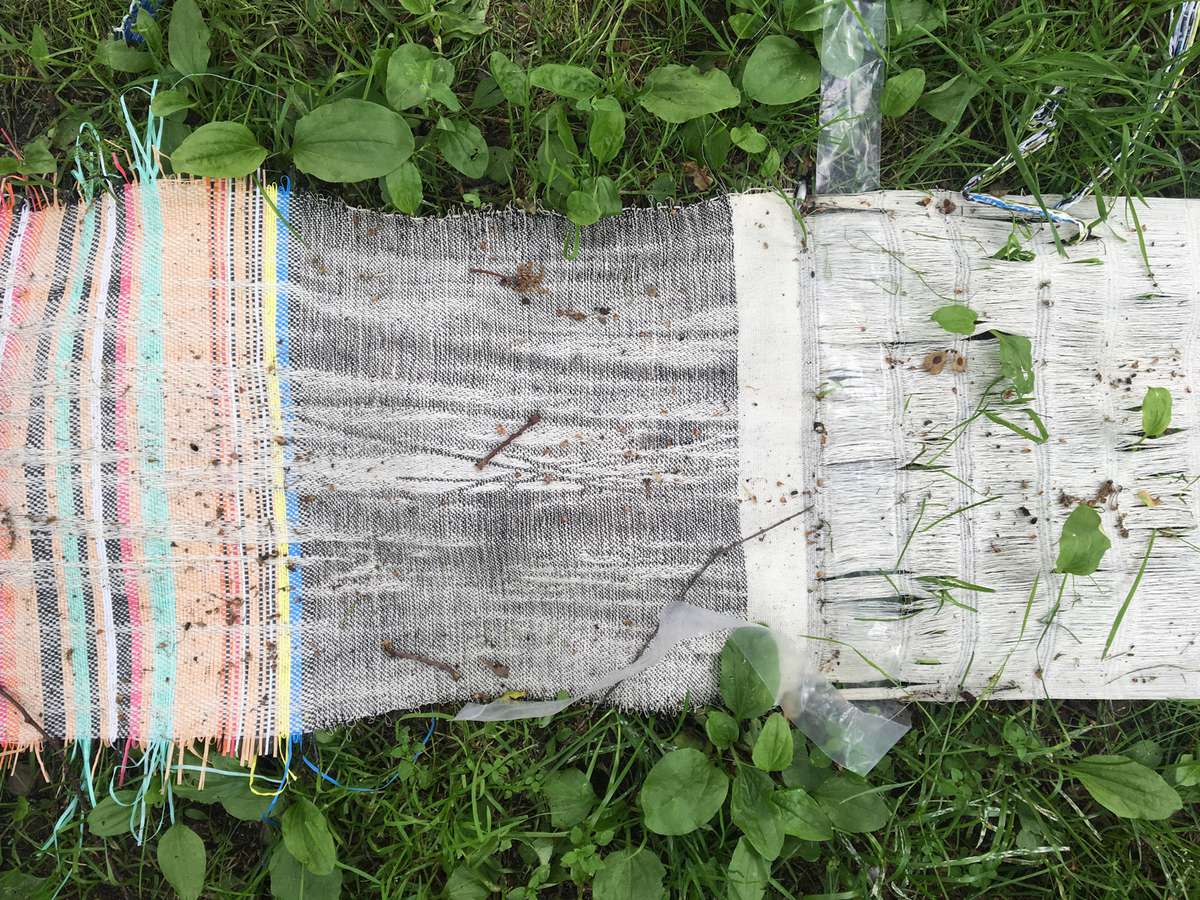
Dear End, 2019, detail of a larger intervention (6x3mt). Cotton, plastic and wool jacquard-woven rug. The rug was installed in Akerselva public park, in Oslo, for three weeks. Grass grows interwoven in the rug fabric.
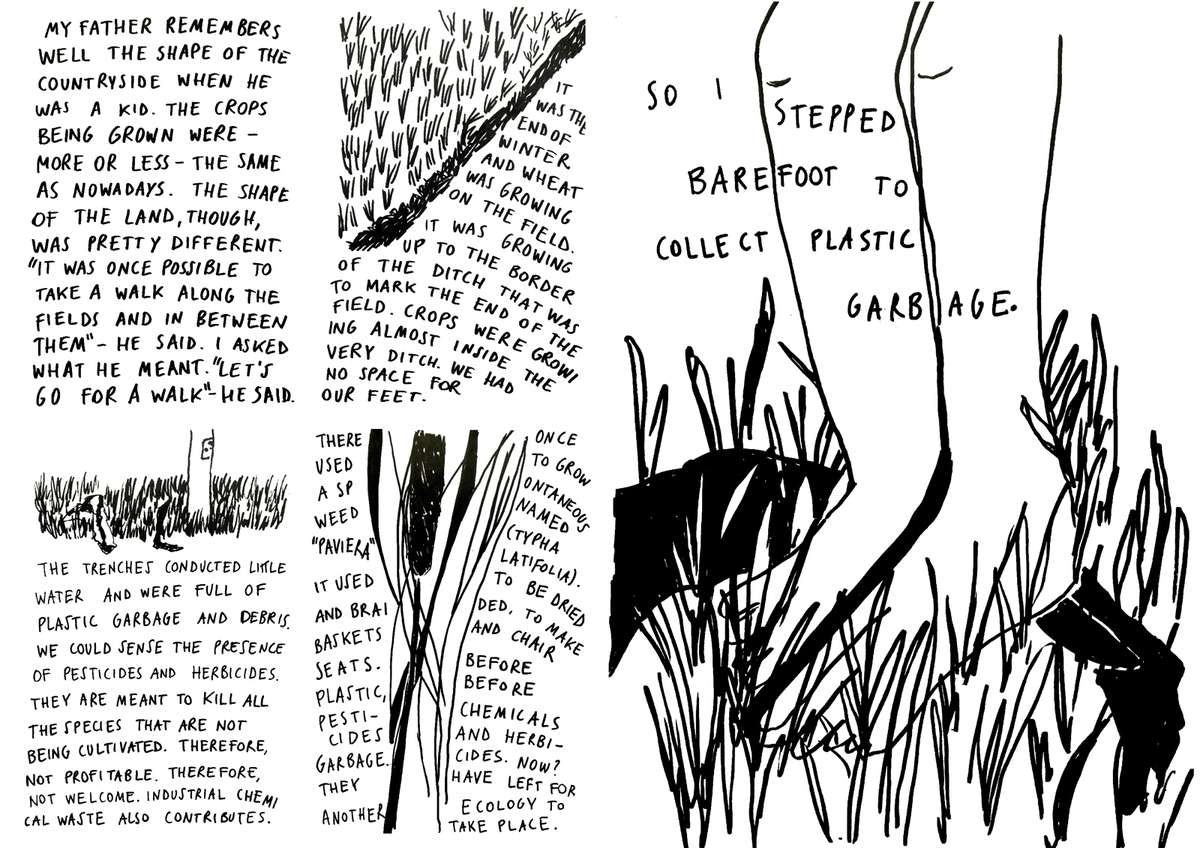
The land and the hand, 2019, pamphlet-poster. 400 copies, distributed in public spaces.
Ecology. Oikos-logos, the logos of the house, dwelling place, habitation. This work is a reflection about the ecology of the countryside landscape of my hometown, shaped by agricultural activities.
Dear End
Dear End

- New alliances
Produce, consume, discard. The contemporary artefacts are born embedded with the perspective of becoming waste in the short-term. In architecture, unfinished and abandoned buildings quickly become contemporary ruins. Our leftovers are a document about the present, and we are surrounded by them. What will be of them after our human passage? Whom will they speak to? Each other? Other life forms? Can they build a narrative for themselves, if only we let them speak? Dear End is about the wounded, fragile and ruthless language of contemporary ruins, in the various forms they take: waste, leftovers, abandoned or incomplete architecture pieces. The project is a research on how to speak the language of the fragile, and how to read between the lines of our built environment. Architecture is here seen in all its vulnerability. Dear End is a suggestion on how to study wasteland, ruins, detritus as the language that will transmit our values to the future life forms inhabiting the planet.
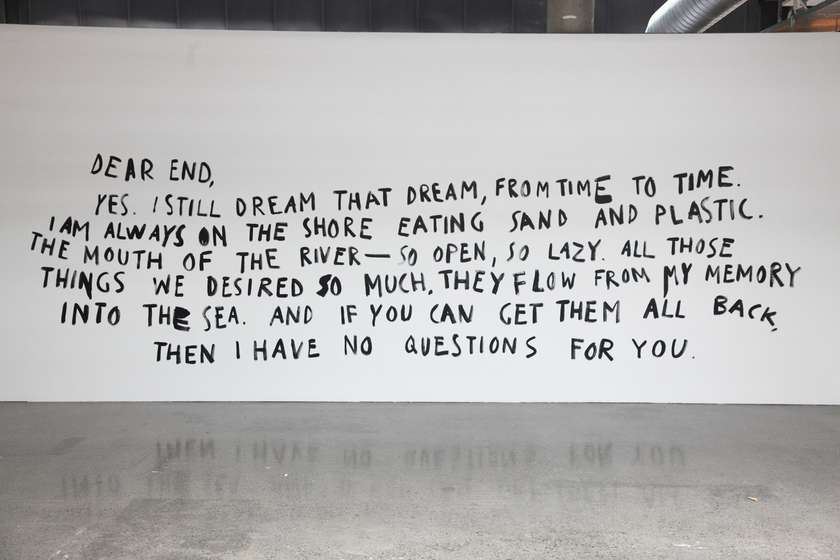
Letter to the End, 2019, murales.
From a note written on Langøyene island, Oslo. The island originally consisted of two separate pieces of land. Across the 20th century, the strait between the two islands has been filled with garbage deposits and then covered with soil, until becoming one island.
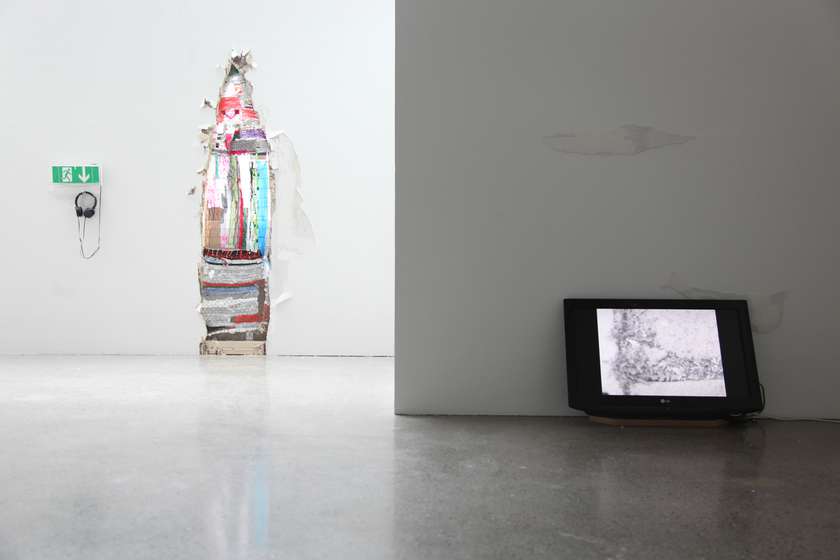
Dear End, 2019, mixed-media installation consisting of: found emergency exit sign, audio piece, broken wall, plastic waste textile, digitalised 8mm film on tv screen.
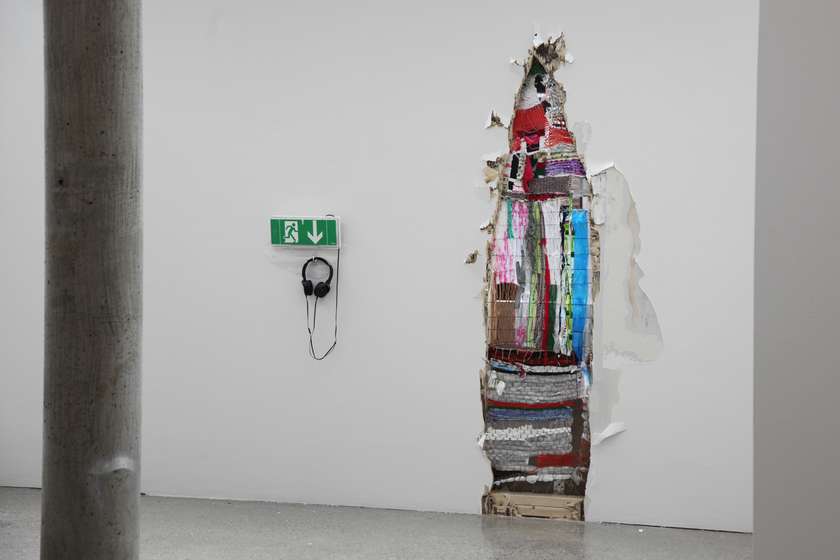
Dear End, 2019, mixed-media installation.
The wall was broken and repaired with a fabric, woven out of collected plastic waste material. Plastic was collected in ditches and farming land. The audio piece was a sound recording of my breath: I was wearing the woven plastic fabric, and the crackling sound of plastic accompanies my breathing.
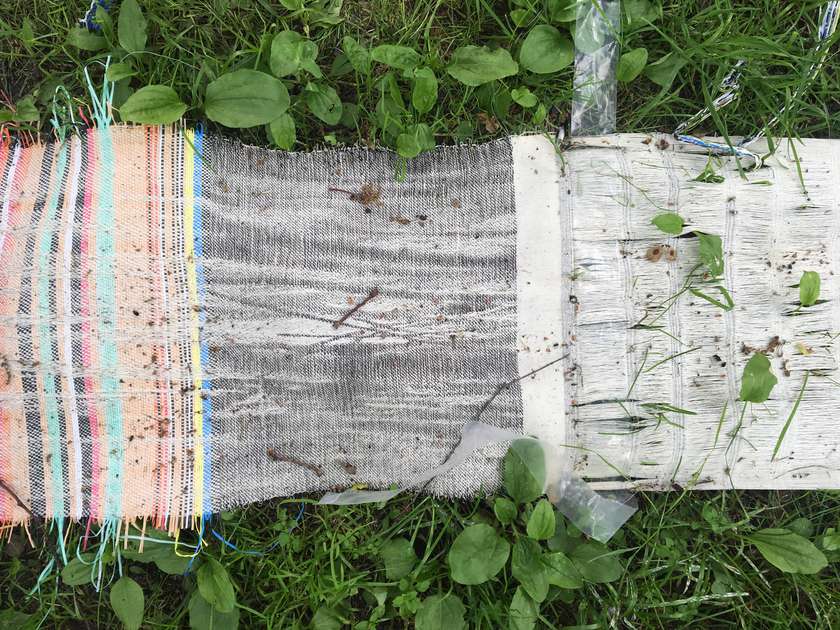
Dear End, 2019, detail of a larger intervention (6x3mt). Cotton, plastic and wool jacquard-woven rug. The rug was installed in Akerselva public park, in Oslo, for three weeks. Grass grows interwoven in the rug fabric.
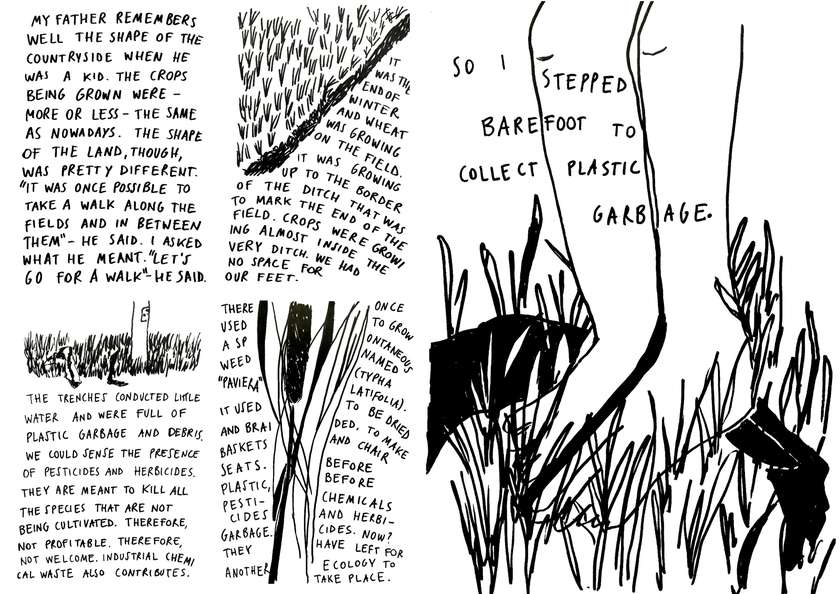
The land and the hand, 2019, pamphlet-poster. 400 copies, distributed in public spaces.
Ecology. Oikos-logos, the logos of the house, dwelling place, habitation. This work is a reflection about the ecology of the countryside landscape of my hometown, shaped by agricultural activities.